NOTES
Wednesday, June 27, 2007
0644
A clear, sunny morning. Metal/blue - red/green and an unbanded were here, at the south feeder, collecting the remains of seed missed by the raccoons last night. Two chickadees are bouncing around above the feeder. Peanuts are in place now; I'm ready with binoculars, hot morning coffee. Watching. Waiting.
0659
Purple/blue-metal/purple and metal/orange-black/blue, last year's juvenile and the resident female arrive. Metal/orange-black/blue grabs two peanuts from the feeder in her characteristic criss/cross pattern while purple/blue - metal/purple chooses from the bench. These two birds are often heard rattling as they approach and leave the feeding area. If my guess is right, they share a mother/daughter relationship.
Uh oh--Panacea--the stray cat is lurking. Sleek, seal-like, my antidote to petlessness; he is a threat to jays. I bring him inside so I can continue watching. He sits restlessly on my lap, switching his tail like the snow leopard I saw on PBS until I give up, put him out the front door, and shoo him north, keeping my fingers crossed he won't return.
Metal/black-orange/white chooses a peanut and flies north. I'm thinking Pia told me this bird is Droopy's mate. If so, Droopy must be sitting on a nest. I haven't seen her in ages. She is of particular interest to me, not only because of her droopy wing, but because her mate was killed here, at the west feeder by a cat. A miserable jay-day for me; the fact that the bird was chosen to be stuffed, and used for boldness studies, offered little consolation.
A lone junco picks at some seed. Did it get left behind? I hate calling the birds "it."--would be more satisfing to attach a gender to him/her.
Metal/red-green/orange, my male, goes into the trap. Pia will be glad to know this--he was impossible to catch last season, much too wary. I told Pia I thought he recognized her car and became particularly illusive once he heard the noisy muffler of her aged, maroon Subaru chug up the driveway. He is as interested in seed as peanuts now and is busy chasing others away, maintaining his dominant status at the feeder.
Metal/orange-black/blue, resident female, arrives again, from the south, skipping from branch to branch towards the feeder, wiping her beak, back and forth, at each stop.
Unbanded shopper, I suspect purple/blue-metal/purple's mate, again picks up a peanut, puts it down; picks up a peanut, puts it down and makes me wonder what criteria he's using to choose just the right one. I think it has to do with shape or size. He will try many rotations, flips, translations--a veritable course in geometry--to finally make the selection. He seems strong and confident.
Metal/orange-red/green chases metal/red-green/white. Metal/red-orange/green is feeding on the seed on the deck. Metal/red-green/white lands on the bench parallel to the deck, lifts his right leg up high and tucks it in, now one-legged; he perches like a wading bird, waiting on the bench for his turn. When metal/orange-red/green flies off, he moves to the vacant spot, takes his peanut and flies.
Metal/red-green/orange (male) chases Metal/black-orange/white (Droopy's mate).
Metal/black-orange/white goes clear into the trap, flies north again.
Metal/blue-red/green chases the resident female and she yields to him, scurrying upward branch by branch, "chucka, chucka, chucka, chuck." Who's making the sound?
Metal/white-black/white and metal/white-red/green show up.
Total Birds: 9-10
A clear, sunny morning. Metal/blue - red/green and an unbanded were here, at the south feeder, collecting the remains of seed missed by the raccoons last night. Two chickadees are bouncing around above the feeder. Peanuts are in place now; I'm ready with binoculars, hot morning coffee. Watching. Waiting.
0659
Purple/blue-metal/purple and metal/orange-black/blue, last year's juvenile and the resident female arrive. Metal/orange-black/blue grabs two peanuts from the feeder in her characteristic criss/cross pattern while purple/blue - metal/purple chooses from the bench. These two birds are often heard rattling as they approach and leave the feeding area. If my guess is right, they share a mother/daughter relationship.
Uh oh--Panacea--the stray cat is lurking. Sleek, seal-like, my antidote to petlessness; he is a threat to jays. I bring him inside so I can continue watching. He sits restlessly on my lap, switching his tail like the snow leopard I saw on PBS until I give up, put him out the front door, and shoo him north, keeping my fingers crossed he won't return.
Metal/black-orange/white chooses a peanut and flies north. I'm thinking Pia told me this bird is Droopy's mate. If so, Droopy must be sitting on a nest. I haven't seen her in ages. She is of particular interest to me, not only because of her droopy wing, but because her mate was killed here, at the west feeder by a cat. A miserable jay-day for me; the fact that the bird was chosen to be stuffed, and used for boldness studies, offered little consolation.
A lone junco picks at some seed. Did it get left behind? I hate calling the birds "it."--would be more satisfing to attach a gender to him/her.
Metal/red-green/orange, my male, goes into the trap. Pia will be glad to know this--he was impossible to catch last season, much too wary. I told Pia I thought he recognized her car and became particularly illusive once he heard the noisy muffler of her aged, maroon Subaru chug up the driveway. He is as interested in seed as peanuts now and is busy chasing others away, maintaining his dominant status at the feeder.
Metal/orange-black/blue, resident female, arrives again, from the south, skipping from branch to branch towards the feeder, wiping her beak, back and forth, at each stop.
Unbanded shopper, I suspect purple/blue-metal/purple's mate, again picks up a peanut, puts it down; picks up a peanut, puts it down and makes me wonder what criteria he's using to choose just the right one. I think it has to do with shape or size. He will try many rotations, flips, translations--a veritable course in geometry--to finally make the selection. He seems strong and confident.
Metal/orange-red/green chases metal/red-green/white. Metal/red-orange/green is feeding on the seed on the deck. Metal/red-green/white lands on the bench parallel to the deck, lifts his right leg up high and tucks it in, now one-legged; he perches like a wading bird, waiting on the bench for his turn. When metal/orange-red/green flies off, he moves to the vacant spot, takes his peanut and flies.
Metal/red-green/orange (male) chases Metal/black-orange/white (Droopy's mate).
Metal/black-orange/white goes clear into the trap, flies north again.
Metal/blue-red/green chases the resident female and she yields to him, scurrying upward branch by branch, "chucka, chucka, chucka, chuck." Who's making the sound?
Metal/white-black/white and metal/white-red/green show up.
Total Birds: 9-10
Subscribe to:
Post Comments (Atom)
Pia Sets the Trap
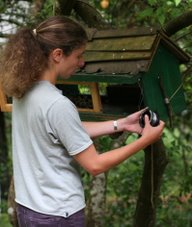
07/24/07
Peaking...
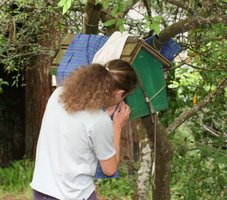
07/24/07
Oops, wrong bird!
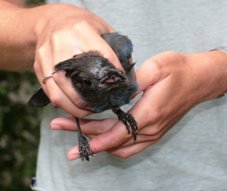
Demonstrating the "hold"
Try Again
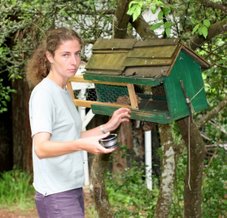
Bird in the Bag
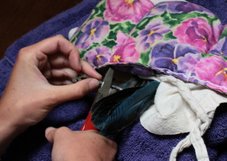
Applying a metal band
Measuring
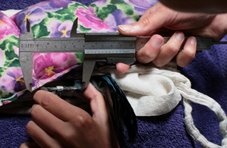
and more measuring. . . .
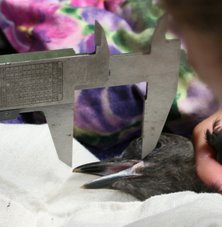
Blood Sampling
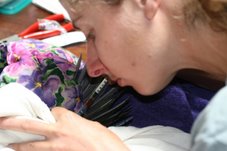
Jeff J's Work
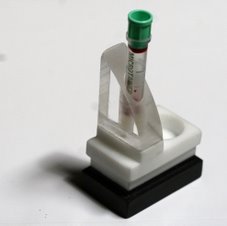
Pia's test tube holder
Weighing
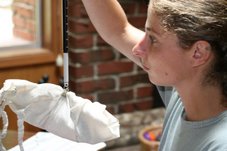
And then....release
When the sun goes down...
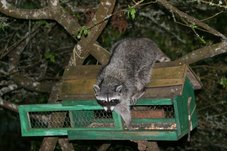
Steller's Jay Taxonomy/Description
Common Name: Steller's Jay
Class: Aves
Order: Passeriformes
Family: Corvidae
Genus: Cyanocitta
Species: Cyanocitta stelleri
Steller’s jay belongs to the family, Corvidae, in the Avian Order Passeriformes. Passeriformes is the order of perching birds. Corvidae is the jay, magpie and crow family. The Steller's jay's scientific name is Cyanocitta stelleri. The generic name, cyanocitta, means "blue jay". Its specific name, stelleri, named for George W. Steller (1709-1746). Steller was a German zoologist who explored the coastal areas of the northern Pacific Ocean in 1740.
Band Colors
black | white | purple | red | orangeBands are read in the following order:
light blue and light blue | green
Note: Light blue is difficult to read. It darkens with age, resembling a green band. (b/w/p/r/o/lb/g)
right bottom band
right top band
left bottom band
left top band
Data Collecting
This information was copied from the website of Dr. Jeff Black, Humboldt State University Wildlife Department.
The data to include for each record:
- Bird’s color code
- Size of social group seen at the same time
- Associates’ color codes (or if unbanded = UNB; or not determined = NOTD)
- Number of times associates came within 3 meters of each other
- Approximate time spent within 3 meter distance (e.g. 2 seconds, 15 sec, etc.)
- Total time you watched the birds (e.g. 5 minutes, 10 min, etc.)
- Time of day; start of observation (e.g. 1935)
- Date (e.g. 9.30.99)
- Location of observation (e.g. Rewood Bowl SW corner west bleachers. And state whether the bird was seen at a birdfeeder or in trees, etc)
- Comments (e.g. deformed leg, feather tuft on back, etc.)
Arcata Steller's Jay Sightings
Mr. Go
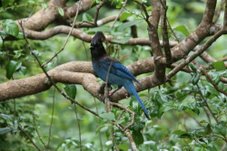
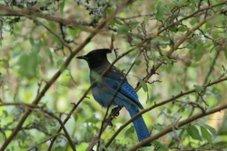
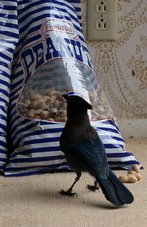
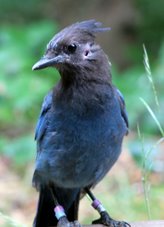
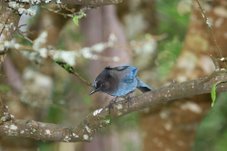
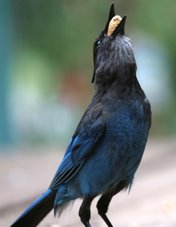
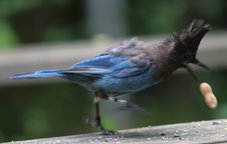
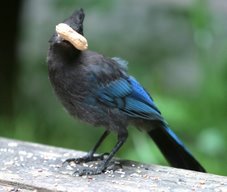
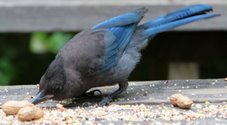
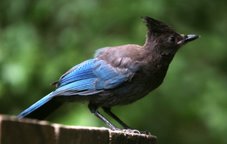
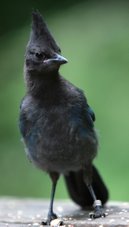

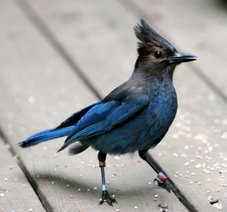
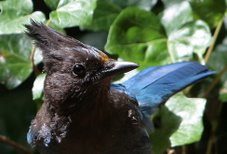
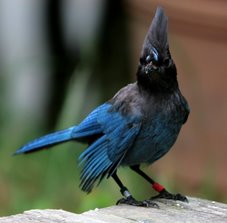
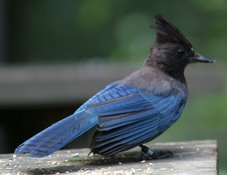
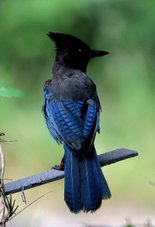
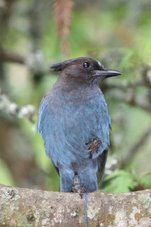
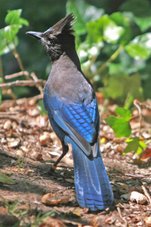
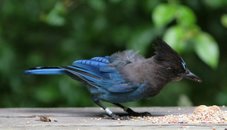
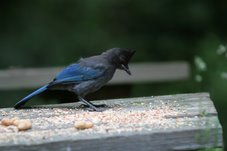
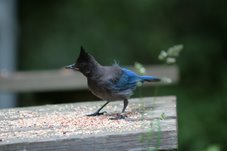
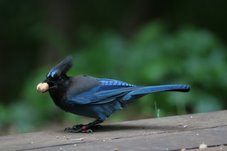
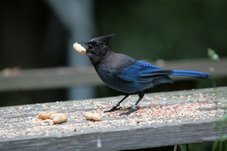
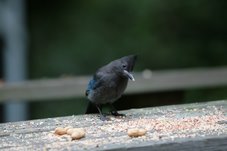
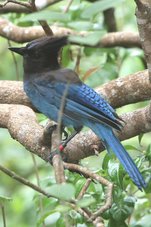
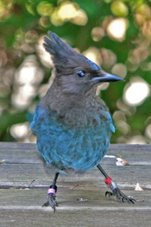
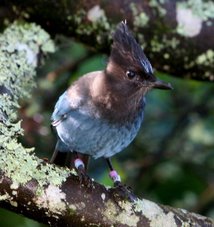
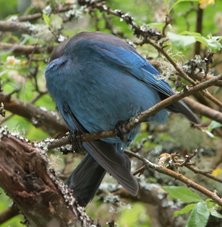
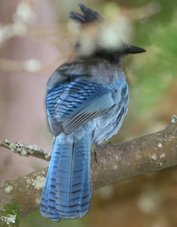
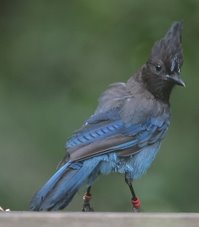
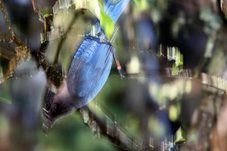
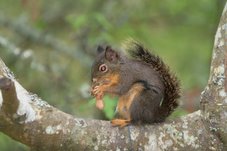
No comments:
Post a Comment